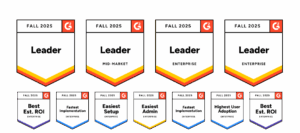Scan Global Logistics Drives Global Financial Compliance with Trintech’s Adra Suite
Case Study
Share
Background
Over the past five years, Scan Global Logistics has experienced rapid global expansion, acquiring or launching operations across dozens of countries. This growth presented a major challenge: “All these entities have different systems, different processes, different reconciliations—if any,” said Anne Line Bendsen, Head of Group Financial Compliance at Scan Global Logistics. The need for consistent processes and greater visibility at the group level demands the need for a unified f inancial compliance solution to enhance overall efficiency and ensure adherence to best practices.

The Challenge
Prior to implementing Trintech’s Adra Suite, reconciliations were handled manually, often in Excel. This created control gaps and inefficiencies. “Even though you can do reconciliations in Excel, for me, it doesn’t provide the same quality,” Bendsen explained. “You can’t track if someone actually reviewed or approved it.”
Additionally, time zone differences and inconsistent documentation practices meant that group-level insights were delayed or unavailable. “We had to wait for people in North America or Asia to wake up to request documentation and understand their balances,” she continued.
The Solution
Although Trintech’s Adra Suite had initially been selected for use in one region before Bendsen joined, she made the strategic decision to expand it globally. “We investigated which other systems were in the market,” she shared. “But because we were already utilizing some of Adra’s functions, and it was user-friendly, it made the decision easier.”
Simplicity and flexibility were critical. “We operate in many countries around the world. We needed a system in English that was fairly simple for everyone to understand,” said Bendsen. “The fact that we could use our own descriptions and make our own template instead of fitting into others’ templates was important.”
Implementation
The organization took a phased approach to implementation, onboarding one finance team at a time. “Some finance teams managed multiple entities, but we allocated about four months per entity to ensure we could support setup, training, and process optimization,” Bendsen said.
The rollout ultimately took about a year to complete across 100 entities. After initial deployment, the team refined their template—what they now call “version 2.0”—based on lessons learned. “We reduced the number of group accounts, changed frequencies and built a better structure,” she said.
Adoption and Change Management
Change management was top of mind. “We had four months of meetings with each entity to make sure they were aligned,” Bendsen said. While changes often require an adaptation phase, and some users, especially those who favored Excel, found it a little difficult to adjust, overall adoption improved quickly. “I don’t have objections anymore,” she noted. “The reconciliation process has gotten faster. We just pushed a few deadlines forward with success.”
Results and Benefits
The biggest impact has been increased visibility and control. “Our biggest benefit is that all required documentation is within the solution, in a simple structure, making it easier to test controls globally,” she said. “It will give us additional comfort in front of our audit team.”
The centralized structure has enabled meaningful group-wide insights and accountability. “Everyone reports into the same reporting tool. Even though we have different ERPs, we mapped them all to align with Adra and their monthly reporting,” Bendsen noted.
Although time savings are hard to quantify, she emphasized the quality improvements. “It helps increase our quality and gives us global controls and a global process,” she said.

Advice to Peers
For others considering financial process automation, Bendsen offered clear advice: “Keep it simple, but be quite strict about the structure. Everyone in finance says, ‘But we do it this way in our country.’ If you cover 50+ countries, you can’t tailor to everyone’s needs.”
She added, “Use some time to tailor the frequency and how to follow up—especially within Adra Task Manager if you want controls. You need rules to identify what you want from a group point of view.”
Looking Ahead
The team is continuing to optimize Adra Task Manager for better documentation of local controls. “Right now, we have the balance sheet reconciliations as a global control. But we want to be able to ensure that the global controls are documented in a standardized way,” Bendsen explained.
Read the Full Case Study
Discover key insights and actionable strategies by downloading our full case study.
See Trintech in Action
Seeing is believing. Discover why Trintech is the real leader in financial close automation.


